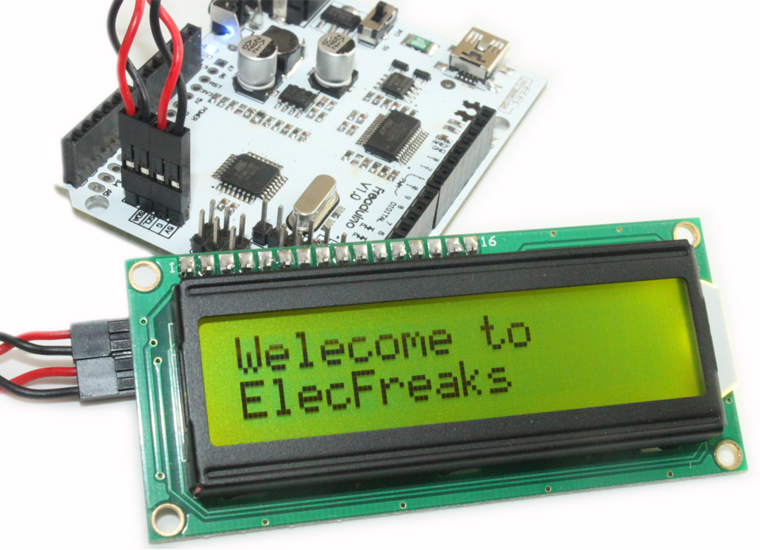
- #ARDUINO LCD LIBRARY PROBLEMS HOW TO#
- #ARDUINO LCD LIBRARY PROBLEMS ZIP FILE#
- #ARDUINO LCD LIBRARY PROBLEMS DOWNLOAD#
=> when compiled with AVRStud = 1 and GLCD = 0 (=> no library-functions of "I2C_graphical_LCD_display" used) then the programme works as intended. The LEDS PD5 - PD7 toggle with 1 second delay time (=> TIMER2!!!!), the USART gets updated every 70ms and the GLCD remains "dark". => when compiled with Ard_IDE = 1 and GLCD = 1 then the programme works as intended. The LEDS PD5 - PD7 toggle with 1 second delay time (=> TIMER2!!!!), the USART gets updated every 70ms and the GLCD shows the defined text. The programme remains frozen - only led PD7 is constantly "on", the programme is not reset via the watchdog which is configured in "init_prg". => right now the programme doesn't work as intended when compiled with AVRStud = 1 and GLCD = 1 => LED PD5 - PD6 are lit "on" and "off" once (which is correct) and then LED PD7 also is lit "on", stays lit "on" and there's no indication on the GLCD, no USART working. #define GLCD 1 "1" => use the GLCD lib - indicate on GLCD

#define Ard_IDE 1 "1" use "void setup()" and "void loop()" for compiler #define AVRStud 0 "1" use only "int main()" for compiler The GLCD will display some messages - see "init_prg" and "cont_prg" The USART will send every 70 ms 20 bytes The 3 leds will be "on" for 1 second (one after the other) - see "TIMER2_OVF_vect" USART (internal) set to 57600 Baud-Rate (U2X = 1) if F_CPU > 15Mhz 1 TWI-PortExpander MCP23017 connected to GLCD 128圆4 The sw is always compiled using Arduino IDE 1.8.10 There is a detailed video in the next step.Again I experience a problem with my sw and help would be very much appreciated (for additional information also seeĪnd the problem stated there was solved thanks to the great help of MrKendo and Brian Fairchild). very simple, if you follow these instructions the LCD will output anything you type in this code. There is void loop because the program need a loop to compile but it should remain empty.Īnd that's it.

Then move the cursor to the second line and the left most position lcd.setCursor(0,1) Then I tell it to go to the first line at left most position lcd.setCursor(0,0) Lcd.setBacklightPin(BACKLIGHT_PIN,POSITIVE) lcd.setBacklight(HIGH) Then I turn on the back light (always good to have a lit LCD), notice it is the same variable from above.

In the void set up, we start by telling the IDE that we are dealing with a 16X2 LCD Initialise the LCD LiquidCrystal_I2C lcd(I2C_ADDR, En_pin,Rw_pin,Rs_pin,D4_pin,D5_pin,D6_pin,D7_pin) #define I2C_ADDR 0x27 //Define I2C Address where the PCF8574A isĪnother line is needed to initialize the LCD, this is done through an array which includes the variables that we defined earlier.
#ARDUINO LCD LIBRARY PROBLEMS HOW TO#
in this section just copy it as is because it tells the IDE where to find the PCF8574A and how to interact with the LCD to turn on the backlight, the read pin, the write pin and data pins etc. I attached a copy of the sketch I used in this instructable,įirst you need to load the libraries, we will load wire.h, LCD.h and LiquidCrystal_I2C.h On my computer the default location was C:\programfiles\Arduino\library. Once you have the library, extract the contents in the Arduino library folder on your computer.
#ARDUINO LCD LIBRARY PROBLEMS ZIP FILE#
I will add a zip file with the library for Windows or you can go the site.
#ARDUINO LCD LIBRARY PROBLEMS DOWNLOAD#
Step one is to download the Liquid Crystal library if you haven't done so already.


 0 kommentar(er)
0 kommentar(er)
